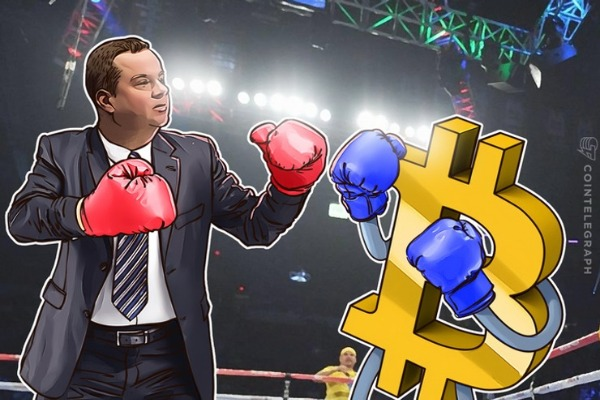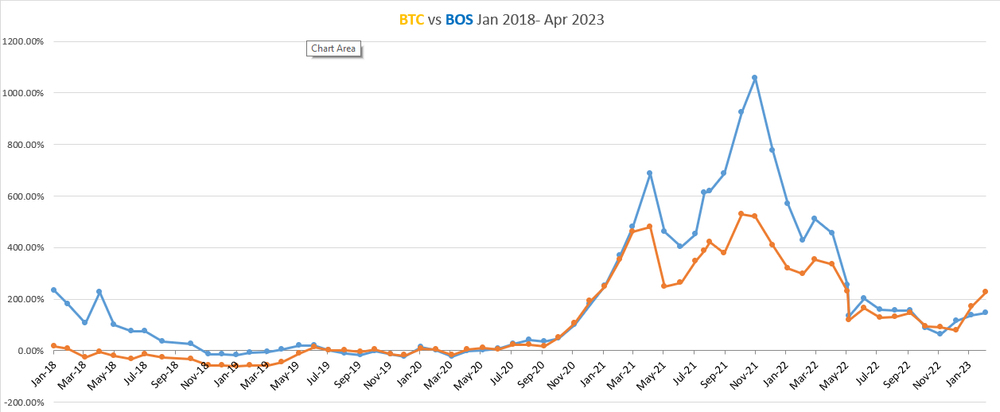Bostoncoin update April – May 2023

The government versus crypto
As reported in previous updates, here and here, governments around the world fear losing power. There have been a lot of lies, disinformation, and a few battles (eg. Gary Gensler and the SEC vs crypto) which may have been seemingly or temporarily won by crypto, but large governments and central banks are unlikely to give up anytime soon.
More and more nations are bringing their own CBDCs (Central Bank Digital Currencies) to market, painting regular crypto and Bitcoin as evil, and trying to convince the public that state-run CBDCs are a better alternative than cryptocurrency.
In a large African nation where 50% of the citizens hold crypto, less than 1% of people have chosen the government CBDC… That must tell you something! It seems that the only people who believe that CBDCs are any good, are governments that make CBDCs and those who do not understand cryptocurrency.
In another African nation, infamous for its government policy of printing more cash than any man can carry, Zimbabwe is splitting the difference.
The Zimbabwe dollar was once worth more than the USD and the British Pound. Over decades of mismanagement, the conversion rates dropped drastically, to a point where a $10 Trillion Zim note had less power than a penny in other nations.
After careful consideration, and a few abortive attempts to relaunch the Zim dollar as an unbacked fiat paper currency, the Zimbabwe government is now looking to back its CBDC with gold. This is an unprecedented move.
The USA reduced 1:1 gold-backing from the USD in the 1940s, and removed it entirely in 1971. There has not been an asset-backed currency in over fifty years. If Zimbabwe can pull this off, it will be a monumental achievement, and may see other nations follow suit, for fear of being left out.
Of course, if the asset-backing fails, it could wipe out anyone holding the currency. Sadly, having your cash dramatically devalued is nothing new for Zimbabwe’s people, where the life savings of millions of people were wiped out a decade ago.
We truly hope that the resurgence of asset-backed currency works out and catches on. Although it is arguable that everyone should have cryptocurrency, not everyone wants it. A gold-backed currency that cannot be infinitely printed and devalued sounds like a short step in the right direction for many.
Interestingly, when the USD was asset-backed, it held around the same value in 1653, 1762, 1844, and 1900. Imagine a society where the price of groceries, houses, vehicles and all consumer goods stayed roughly the same for 300 years… Selah!
Since 1933, when the USD moved away from gold-backing, the purchasing power of the unbacked paper fiat currency has dropped over 90% (99.65% for the GBP). It may be a long time (if ever) before any western nation introduces an asset-backed currency, as governments would have to purchase massive reserves of gold and silver and then pay someone to store the assets. Can they afford to do that? Probably not.
The same governments who desire asset-backing may also have to ban private ownership of gold and silver, as has been done in the past by the USA, Poland, Australia and the UK.

When the government passes a law saying they are seizing your valuables “for your own good”, and then later, offers to sell the same asset back to you for triple the price, it may be time to break up with them and start seeing other governments…
If you think that pandemics, masks and lockdowns were “unprecedented”, wait until you see what comes next with CBDCs versus crypto. In the last 200 years, whilst unbacked fiat currency has dropped by 90-99% in value, there have literally been seven (7) cholera pandemics, another black plague, Spanish flu, Hong Kong flu, Swine flu, Bird flu, SARS, MERS and COVID. Your ancestors were probably very sick of cholera. You may be sick of inflation, devaluing currencies and central banks that almost always overcorrect; with the poorest people being the biggest victims.
But everything can still work out OK in the end, as Satoshi Nakamoto gave us Bitcoin: a deflationary currency that aims to hold its value over time, without manipulation by governments or central banks. As your cryptocurrency can be stored on your phone or a small USB device (eg. Ledger), it is a lot harder for the jack-booted government agents to seize your crypto than it was for them to seize your grandpa’s gold in 1933. Long live Satoshi, for we are all Satoshi now.

Banks Versus Crypto
As we saw recently, the collapse of several banks in the USA caused no small amount of panic among account holders, and a decent rise in the price of cryptocurrency.
This month, another bank looks to be folding up, as First Republic Bank lost $100 billion and its stock dropped by 50% within hours. It seems that disgruntled bank savers and bank stock investors may have been seeking the ‘safe haven’ of crypto, as the Bitcoin price jumped 2.5% whilst the bank was falling.
As a reader of this column, you’re likely smart enough to realise that the recent bank collapses have been caused in large part by the irresponsible actions of the Federal Reserve, dramatically raising rates after promising not to do so, but there are still legislators in the USA claiming that the bank collapses were caused by crypto. This may be as irrational as claiming that ambulances cause accidents, because you always see an ambulance next to the carnage, but some undereducated people will undoubtedly fall for the bluff and blame crypto instead of the Fed’s incompetence.
Even as the USA seems to be squashing crypto companies, the world’s oldest banks in London are lining up. The UK is embracing crypto companies, and may benefit from any mass exodus of crypto companies leaving the USA.
Echoing words that could have been said at the start of the Revolutionary War, the head of the UK’s financial regulator acknowledged that crypto was once a small “symbol of rebellion” but has now “become more widespread”. Rather than fighting against cryptocurrency, the UK is opening its arms and inviting input from crypto stakeholders, so that governments and crypto companies can work together in creating a strong, transparent and regulated system.
Meanwhile, not to be outdone by their old rivals, the French are drafting up crypto-friendly legislation of their own, which they hope will be adopted across the European Union. Your dreams of a crypto-funded European holiday may be getting closer.

Out of Chaos, into Maturity
It was not so long ago that crypto-mania seemed more mainstream than disco-fever. Matt Damon spruiked crypto.com on TV and YouTube, “Seinfeld” sitcom creator Larry David waxed on about FTX, as did football legend Tom Brady and Gisele Bundchen. One of the Kardashians failed to disclose receiving $250 000 for promoting Eth-Max (and was later fined five times as much as she received).
Youtube channels, blogs and podcasts focusing on cryptocurrency were popping up like mushrooms, and it seemed that everyone was making money (particularly the “fin-fluencers” who were being paid to say that bad projects were great).
After all the hype came the hangover, and crypto markets dropped from $3 Trillion to $1 Trillion. Some people lost all their money (eg. SBF’s FTX investors), some lost 90% on altcoins, many had their funds locked up indefinitely (eg. Celsius) and most became very disillusioned. If you cannot trust actors (people who lie for a living), then who can you trust?
Over time, people realised they could trust in the projects, not the pretentious pizzazz. You could trust in the algorithm not the actor, and have faith in the smart contract not the supermodels. Crypto markets have been gradually recovering many of the lost gains (well, the decent projects are recovering, not the $HITcoins), Bitcoin is up around 70% this year, but it seems quiet out there… What’s going on?
With a minimum of 20 year’s experience, everyone in the BostonTrading team is old enough to remember the movie “Wall Street” with Charlie Sheen and Michael Douglas. The movie was set in 1985, a time when the stock market was mostly still mysterious and elitist. Although fiction, the movie seemed to show that anyone with tenacity, intelligence (and maybe a touch of bad-assery) could make money in stocks. Some of us wanted to be Bud Fox, some wanted to be Gordon Gecko, and we all wanted to be rich.
From 1985 to 1987, the stock market rose dramatically, up to 521%, as everyday people piled into this apparently demystified opportunity. However, companies cannot continue to rise in price unless there is underlying value, and the Gecko hit the fan in late 1987 in one of the world’s worst stockmarket meltdowns. Prices dropped and everyday investors had their dreams as well as their investments crushed.
However, in the aftermath of the massive stock crash, savvy investors bought the dip, and continued to seek value rather than fanfare. We all know that the stock market continued to function after the 1987 crash, as it did after the 1929 crash, 9/11/2001, the 2008 GFC and many others. After the hype, comes the hangover, but those who manage it well, will be happiest.
You can still make money after a stock crash, and you can still make money after a crypto crunch: just keep your wits while everyone else is losing theirs.
When Bitcoin dropped from $30k to $20k last year, it was the death knell for FTX, Celsius, Three Arrows Capital, Genesis, BlockFi and Voyager Digital. This year, when BTC rose from $20k back to $30k, there was very little noise. We feel that this is a good thing, as it seems that the crypto market is displaying some maturity.
Those who were partying like rockstars and eyeing off Lambos after making 50% gains in 2021, seem to be quietly enjoying a cup of Earl Grey during the 50% gains in 2023. Having been through a 75% drop in 2022 seems to steel the nerves and prevent one from celebrating too early.
Even as crypto markets may drop 90% or make 1000% gains in the next three to five years, remember that Satoshi giveth and Satoshi can taketh away. Do not become overly excited by the temporary fluctuations: just accumulate, HODL and see what 2030 will bring.

What the WEF?
If the central banks and governments of the world are stormtroopers chasing the crypto rebels, then the WEF would be the Empire, and “Mister Davos”, aka. Klaus Schwab is the Emperor. Schwab has been head of the WEF for over 52 years, and his detractors claim he is a law unto himself, answerable to no shareholders and no country.
Mostly critical of cryptocurrency, WEF members such as US Treasury Secretary Janet Yellen and European Central Bank President Christine Lagarde have claimed that crypto is bad for the planet, only used for criminal activity and money-laundering (FALSE: crypto uses less energy than legacy banking systems, and has 98% less criminal use than the USD).
At this stage, we could line up the usual suspects: mostly white, western octogenarians who hold onto the old systems (Lagarde has more power than many small nations, Schwab has more power than most large nations, Yellen was Chair of the Fed), see that they are biased against the new systems, and change the acronym of the World Economic Forum to “White Elderly Fossils”.
The World Economic Forum has been saying for years that crypto mining is bad for the environment, and constantly bleating out claims that Bitcoin mining uses more power than (insert some tiny country with a tiny population). This is just as misleading as the “ambulances cause accidents” scenario, as the WEF is comparing apples to orangutans.
Bitcoin and crypto are not tiny island nations and should not be compared to them. The crypto industry is an alternative to the massive global banking system; but it does not suit the narrative of the crypto-naysayers to compare crypto’s energy usage to the power use of every single bank, branch, ATM and brokerage house. (Spoiler alert: crypto is far better for the planet than the archaic banking system.)
Despite the obvious bias they have shown for many years, even the WEF had to come out and applaud the environmentally-friendly use of crypto mining by Crusoe Energy, where unexpected methane gas flares from oil production or landfill that are normally burnt and wasted, are captured and used to mine cryptocurrency.
Mind you, despite applauding the Crusoe company, the WEF was very careful to use elusive euphemisms such as “data processing”, “the future of computing”, and “computing revolution”. Not once in the video or posts did the WEF mention that Crusoe was saving the planet with cryptocurrency or Bitcoin; as that would mean admitting WEF hypocrisy.
Even though the White Elderly Fossils did not come out and say that the planet could coexist much better with crypto than with legacy banking, or that crypto is the future, we trust that some of the younger, less biased and independent thinkers are starting to notice. The rebellion does not succeed because a few telekinetic wizards with glowing swords are stronger than the Emperor; the rebellion succeeds because good must always overcome evil, the new must overcome the old and decentralised democracy must always supplant power concentrated in few hands.

What are we up to?
As crypto markets claw back some of their gains from the terrible 2022 crashes, we see a few projects improve faster than others. This month the DARTcoin fund shows gains from 103% up to 130% in TRON, QNT and MATIC (whilst Bitcoin is still only around 70-80% of its 2022 values).
For the flagship Bostoncoin fund, we show gains between 105% up to 117% on coins such as Solana, CRO and BAT. Stock is down in SuperLoop, as employees returning to offices drives WFH network use lower, although we expect ‘net use to go higher in the long-term, with the increase of autonomous vehicles and smart home devices. Stock in exchange Coinstash is up around 33% since we bought. The BOS fund itself is up 274% since the 2020 lows.
During the last crypto bull run, the Bostoncoin diversified portfolio made almost twice the returns of Bitcoin. We were happy that during the crypto bear market, we basically kept pace with the benchmark, so the highs were much higher and the lows were not much lower.

As reported last month, many investors faced losses of over 90% in the bear market, and several institutions went bankrupt or had to close down. Thanks to our strategic selection and sensible investing, we are still thriving, and absolutely delighted to be with you for the next bull run.
We cannot promise that the gains will be over 1000% like they were last time, but we can promise you a free gift if you share this newsletter with a friend and encourage them to subscribe. I am sure that you know someone who was into crypto for years before you were, and you secretly wish they had told you much earlier. Be generous with your knowledge and share the good news: all the best crypto updates, once a month, for free, and your friend can easily unsubscribe if they don’t like puppy jokes.
See you next month
Apr 30 2023
BOS NAV 69.003552 AU
BOS Price 75.9039072 AU
BOS NAV 47.6124518 US
BOS Price 52.373697 US
Apr 30 2023
DART NAV 100.263669 AU
DART Price 110.290036 AU
DART NAV 69.1819332 US
DART Price 76.1001265 US
